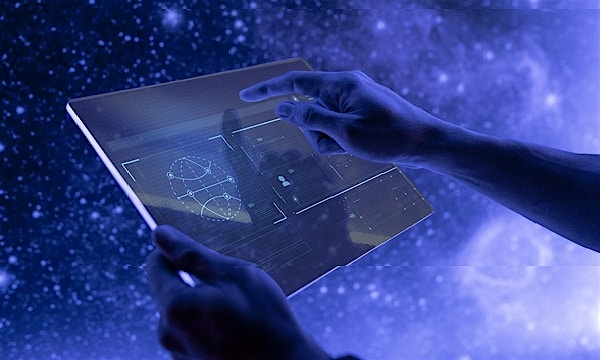From helping build a cleantech economy with sustainable engineering to highlighting the menaces created by greenwashing, next-gen technologies have been essential in emphasizing the differences between the present linear economy and how to develop a circular economy (CE)—where the grass is indeed greener.
It’s evident that advancements in green technologies, backed by green techniques, have taken inspiration from century-old practices that include use of geothermal energy, wind energy and solar power, and are vital components of a CE required for a sustainable future. These technologies not only save time and money but are also designed to minimize the negative impact of human activity on the planet.
If you think today’s electric vehicles (EVs) are part of a revolution toward “reducing carbon emission,” note that 90% of New York City taxis were EVs in the 19th century already. So, what’s new?
Vijayanand Gejji, Practice Head - Sustainability Engineering and Cost Management CoEs at HCLTech, highlights how electrification of these vehicles can be achieved using green renewable energy and microgrids, and questions the EV battery challenge.
He says: “With a high rate of EV adoption happening now, the upcoming problem lies with the batteries when they reach a certain threshold of usage. These will not be fit for use in any passenger car or vehicle due to safety and performance factors. What will be the future of these millions of tons batteries from a sustainability perspective?”
“Besides traceability of their life, how do you repurpose them? Can you create a power grid out of all those batteries and provide a power backup to a place battling with unreliable power infrastructure for continuous power? It’s like giving a second life to batteries to make the EV ecosystem sustainable,” he adds.
Three technologies supporting a CE
Artificial intelligence (AI), big data and analytics and blockchain have been supporting sustainable initiatives, easing traditional ways of work and bringing in transparency in various supply chains.
It has widely been acknowledged in research that the adoption of digital technologies, digitalization or digital transformation with the right technology partner can help in transitioning to a CE and carbon-free economy. The other three technologies are:
IoT
On the path of CE implementation, one enabler that supports and integrates various technologies is the Internet of Things (IoT). Perhaps the most crucial ally in developing a CE, it provides real-time data to a user that can be accessed from anywhere.
“Repurposing existing resources along with real-time data from smart objects using technologies like IoT, big data and AI, effectively manages and is impactful in the formation of a circular economy,” says Gejji, who feels even the EV challenge can be addressed in this way.
To access such data, the switch to a 5G network that supports the speed and gives accessibility of the required data is important. According to Qualcomm, 5G’s ultra-low latency, extreme reliability and speed that is 20 times faster than today’s available networks, combine for a perfect fit in developing a CE, which can reduce global emissions by 6% every year.
Benefits of IoT in a CE
- Provides data-driven solutions in proactive decision-making that supports circular and ethical business practices
- Allows integration of smart objects into the business ecosystem
- A circular-by-design IoT architecture drives data harvesting
- Helps prolong the usage stage of products
- Improves estimations of the remaining lifetime of products in use
- Improves tracking, keeping records, monitoring and maintenance of smart objects
- Gives better visibility of organizational supply chains
- Enables creation and processing of the data in circular supply chains
- Assesses CE measures with digital twins
- Helps eliminate waste, circulate materials and regenerate nature
IoT and big data combined
Data is the fuel that is collected or shared by an IoT-enabled device. 5G-enabled sensors in such devices produce large amounts of data that are collected by an organization for predictive analytics, advanced decision making, machine learning projects, tracking, and maintenance and repair.
IoT and AI combined
The enormous amount of data generated from all IoT-enabled devices becomes complex to store, retrieve and process. AI helps in the delegation of different pattern recognition, learning, solving complex problems, predicting accurately and making correct decision making.
IoT and blockchain combined
Together, they enable a central ledger of transactions that brings transparency across the supply chain, enhances the provision of technical support and empowers new and circular business models.
“When it comes to how green investments can lead to certain accelerators and certain startups in building a CE, IoT is one technology that helps build a sustainable supply chain. This brings connectivity in the entire system and providing real-time data for enhanced and better decision making at various levels in an organization. Coupled with AI, this huge amount of data gets easily segregated according to demands at different levels,” says James Trebilco, Senior Sustainability Manager at HCLTech.
“Even outside supply chain management, IoT, big data and AI are among the modern-day technologies helping with identifying weather patterns, climate data, a potential fire risk, flooding risks or deforestation with regards to nutrients, and maybe the changing of aquifers,” he adds.
Bioo is a new technology that uses IoT-enabled real-time power monitoring on-field or remotely to power biological batteries that light up gardens or fields, Bioo reduces 334 grams of carbon emissions per square meter annually and saves 50% of water while helping maintain the natural ecosystem. This one-of-a-kind revolutionary biotech company—awarded by the European Parliament and Google—has been spreading greenery across the globe and creating the first biotechnological buildings and cities in the US, the UK, Spain and Algeria.
Extended Reality (XR)
Digital replica of a physical form that can be accessed and addressed from anywhere via a laptop or a phone, the work of a digital twin needs to be monitored at various stages at an organizational level. This surveillance becomes easy with Extended Reality (XR) and its supporting technologies: Virtual Reality (VR), Augmented Reality (AR) and Mixed Reality (MR).
Real-life examples of how XR is helping the world include a virtual tour of the dying Amazon rainforest, checking and comparing the pollution levels of cities, witnessing a Holocaust survivor’s history, the Netherlands’ Virtual Gateway, Shanghai and Singapore’s digital twins, tree-mapping in the city of Mendoza, a digital-twin windfarm, a digital fashion multi-brand retailer and a revolution in the healthcare industry.
“Cutting-edge technologies like XR—in combination with IoT devices and 5G network—can be used to extract critical insights, visualize and understand sustainability goals in the context of a sustainable smart city like Shanghai. One powerful application in this domain is a digital twin that can not only provide details of environment factors like checking the parameters of carbon emissions, temperature and air quality among others in real time but also helps architects, designers and engineers while attending to a repair work or a glitch.
“The presence of digital twins of every object creates a network that helps these technicians see the problems remotely and solve them. Even its netizens can interact with each other and technicians on a common platform if there’s any issue that they are facing. This way the virtual replica and XR allow people to see the real picture that can be utilized for monitoring, analysis and quick decision-making,” says Gejji.
Benefits of XR in a CE
- XR technologies bridges the gap between theory and reality
- Helps sketch problems of the linear economy
- Prompts innovation and explores solutions engaging key audience and major players in an active manner
- Shows a clear picture of how and where waste is generated and how to eliminate it
- Helps circulate products and materials and regenerate nature to mitigate climate change, reverse biodiversity loss and improve global food systems
- Shares solutions-based progress toward a CE
- Shows the world how agricultural waste and plant dry matter generate new products
- Gives real-time inputs to environmental designers and urban planners
- Helps farmers with real-time analytics and improves productivity
- Helps agricultural industry with complex intercropping and increases crop diversity
- Dematerialization addresses waste and pollution in the fashion industry
- Helps create ‘meta closet’ virtual items and outfits, eliminating material wastage
- Helps doctors in surgeries remotely and lab assistants in their work
- Teaches complex concepts in educational institutes with 3D models
- Trains entry-level employees in various organizations
Cloud
With a sustainable architecture, cloud is not just a storehouse of the humungous amount of data from across the globe, but it also allows scientists to identify and innovate ways to support a CE.
“Besides helping shift operations away from on-premises data centers that contribute to emissions, cloud helps an organization in many forms,” says Siki Giunta, Executive Vice President, CloudSMART Offerings Strategy, Industry Cloud Consulting at HCLTech.
“In a time of crisis, cloud provides the ability to provide on-demand access to computing resources and storage. Coupled with AI—that automates and optimizes tasks—scientists can process and interpret a large amount of data, predict weather, its impact on population and to some extent, even earthquakes,” she adds.
HCLTech Data & AI on Cloud, cloud engineering and CloudSMART solutions combine services to modernize enterprise data and analytic environments, including data sciences, and data and analytics platforms, transform data into valuable information that helps mitigate risk and strengthens decision-making. It also helps organizations transition to a CE more smoothly with its hybrid cloud services, multicloud managed services, cloud solutions and ecosystem.
Besides HCLTech, its ecosystem partners and leading players like Microsoft, Google and AWS have set examples of reducing carbon footprint and decarbonizing data centers.
Benefits of cloud in a CE
- On-demand computing resources provided with little waste
- Reduces on-premises footprint
- Provides digital models while supporting analytics
- Enables organizations to explore green energy options and waste recycling methods
- Provides real-time data sources
- Accelerate data integration and reporting
- Provides accurate carbon accounting
- Measures performance against goals
- Enables intelligent insights to take more effective action
- Drives corporate sustainability agendas
How is HCLTech contributing to a CE
With decades of experience in digital, engineering, cloud, AI and sustainability, HCLTech is building exciting use cases in the metaverse with HCLTech Metaverse solution, as well helping organizations with digital transformation, migrating to the cloud, adoption of FinOps and sustainable engineering among others. All these help organizations in meeting their net-zero goals and allow them to work toward preserving the planet.
Some recognitions and initiatives include:
- Winner of Cisco Global Digital Sustainability Challenge, Net Zero Intelligent Operations (NIO) solution by HCLTech IoTWoRKS™, is an enterprise-wide energy and GHG emission management solution
- Winner of the 2023 IoT Breakthrough Award, HCLTech Smart Consignment Inventory Management (SCIM) solution, adheres to a ‘first expired first out’ (FEFO) methodology to reduce waste. It transforms medical supply chain processes by enabling end-to-end real-time inventory visibility from manufacturing facilities to point of care
- To leverage the power of generative AI, HCLTech recently expanded its partnerships with Google Cloud and Microsoft to develop joint solutions to enable businesses to achieve better outcomes and enhance business transformation
- Forrester Wave™: Multicloud Managed Services Providers, Q1 2023 report recognized HCLTech as a Leader for its technical strengths and broad capabilities. The Forrester Wave deems it a good fit for enterprises looking to extend their managed services support to cloud, especially those focused on Azure or Google Cloud Platform
- HCLTech is a member of the Blockchain in Transportation Alliance (BiTA), an organization dedicated to determining best practices and standards for blockchain in the transportation industry. It delivers deep expertise in digital technologies to the alliance and helps develop blockchain-based solutions for the industry
- HCLTech has been recognized as a leader in ISG Provider Lens™ AWS Ecosystem Partners – 2022 AWS Data Analytics and Machine Learning for the US
- HCLTech launched a suite of innovative technology solutions for the 5G ecosystem at the Mobile World Congress this year
- Besides creating 5G-powered theme parks, with its 4D framework—comprising discover, design, develop and deploy phases—HCLTech creates the right 5G architecture for CSPs to function in and operate with any new-age technology
- HCLTech partnered with World Economic Forum’s UpLink last year with a $15 million investment over five years to drive a freshwater conservation and management agenda
- While promoting ethical waste management and energy efficiency, between 2010 and 2020, HCLTech has reduced its per-person carbon footprint by 55.9%, increased the share of renewable energy in its energy consumption in FY’20 to 10.4% and reduced per-person water consumption by 23.5% since 2013.






